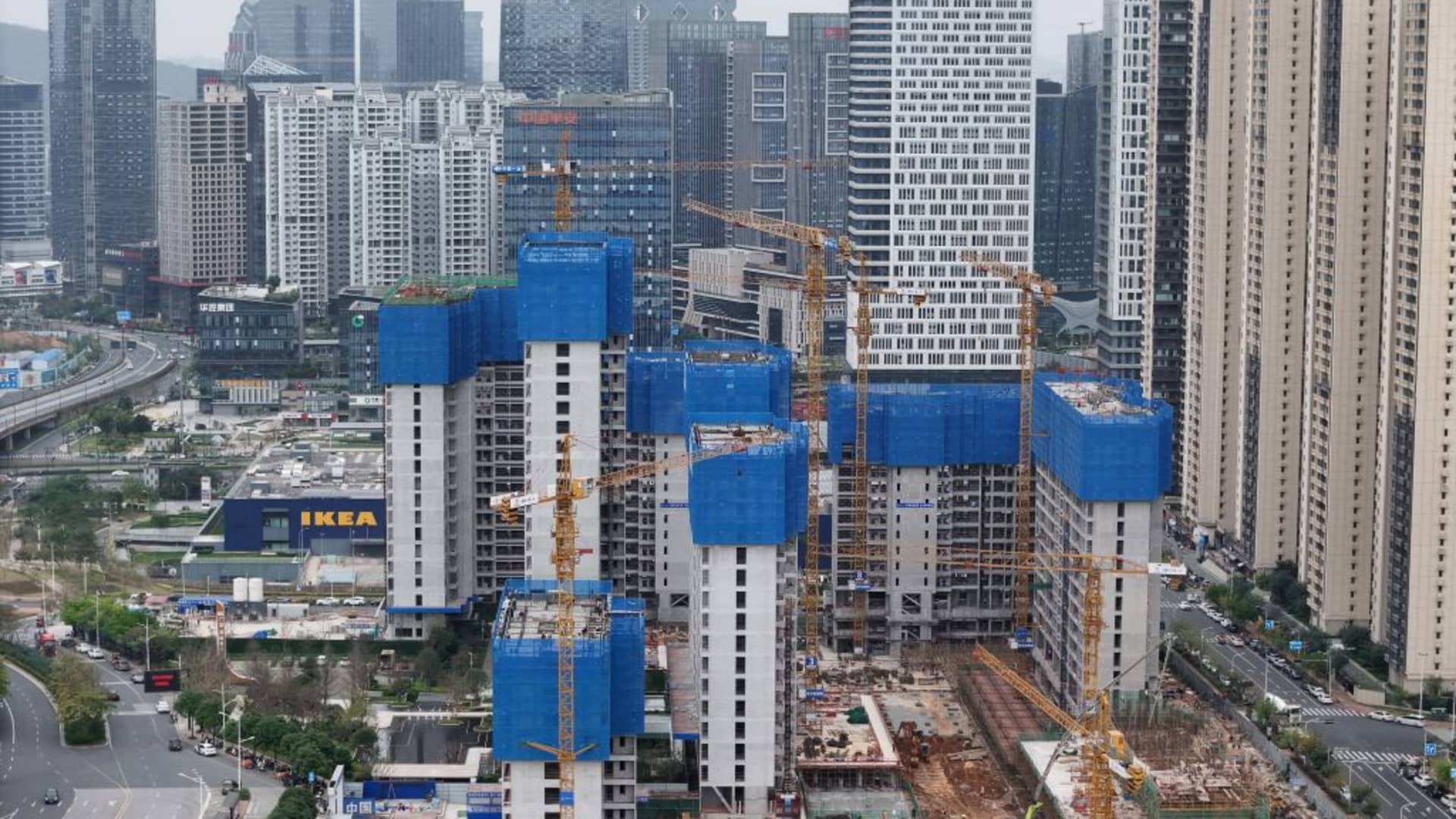Pictured listed here is a commercial residential home under design on March 20, 2024, in Nanning, money of the Guangxi Zhuang autonomous region in south China.
Foreseeable future Publishing | Long run Publishing | Getty Pictures
BEIJING — China’s fiscal stimulus is losing its success and is more of a technique to buy time for industrial and use insurance policies, S&P World wide Rankings senior analyst Yunbang Xu reported in a report Thursday.
The investigation utilised development in government expending to evaluate fiscal stimulus.
“In our see, fiscal stimulus is a acquire-time technique that could have some longer-expression rewards, if tasks are focused on reviving consumption or industrial upgrades that boost benefit-increase,” Xu explained.
China has established a target of about 5% GDP progress this 12 months, a intention quite a few analysts have said is bold supplied the stage of announced stimulus. The head of the best financial arranging company explained in March that China would “bolster macroeconomic insurance policies” and raise coordination among the fiscal, financial, employment, industrial and regional guidelines.
Large credit card debt degrees limit how a lot fiscal stimulus a local federal government can undertake, regardless of no matter whether a city is deemed a substantial or minimal-cash flow location, the S&P report stated.
Public credit card debt as a share of GDP can assortment from about 20% for the superior-earnings town of Shenzhen, to 140% for the far scaled-down, reduced-income town of Bazhong in southwestern Sichuan province, the report mentioned.
“Offered fiscal constraints and diminishing effectiveness, we be expecting neighborhood governments will target on lowering pink tape and taking other measures to boost small business environments and support extensive-expression growth and residing specifications,” S&P’s Xu mentioned.
“Financial investment is less powerful amid [the] drastic residence sector slowdown,” Xu additional.
Mounted asset financial commitment for the year so far picked up pace in March vs . the very first two months of the 12 months, thanks to an acceleration of expenditure in manufacturing, in accordance to formal knowledge produced this week. Financial commitment in infrastructure slowed its progress, although that into genuine estate dropped further more.
The Chinese governing administration previously this year announced plans to bolster domestic demand from customers with subsidies and other incentives for products updates and purchaser product trade-ins. The measures are officially expected to develop nicely about 5 trillion yuan ($704.23 billion) in once-a-year paying on products.
Officials advised reporters final week that on the fiscal front, the central authorities would supply “potent aid” for this sort of updates.
S&P observed that community governments’ fiscal stimulus has typically been even larger and additional helpful in richer metropolitan areas, centered on info from 2020 to 2022.
“Bigger-cash flow cities have a lead for the reason that they are significantly less susceptible to declines in residence markets, have more robust industrial bases, and their consumption is extra resilient in downturns,” Xu said in the report. “Field, usage and financial commitment will stay the essential development motorists likely forward.”
“Increased-tech sectors will continue to drive China’s industrial up grade and anchor extensive-expression financial expansion,” Xu stated. “That explained, overcapacity in some sectors could spark price agony in the close to term.”








